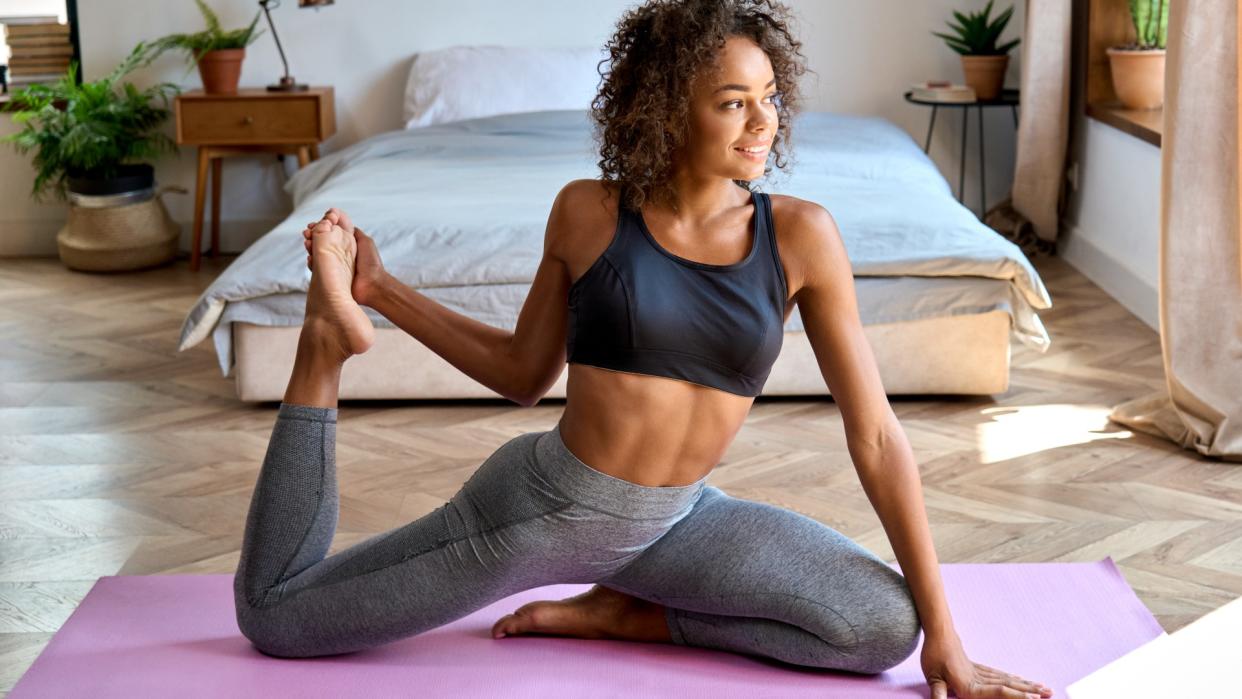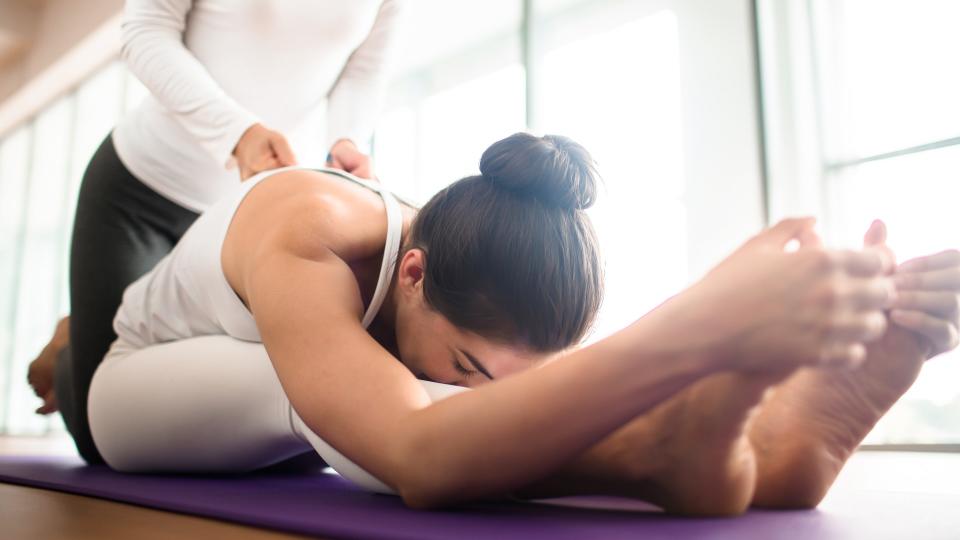What is yin yoga? Everything you need to know

Where there’s a yin there’s a yang, as the ancient Chinese philosophies say. And so while yang energy is light and active, yin energy is soft, passive and contemplative. You’ll find styles of yoga reflect these energies, which are counterbalancing and represent two halves of a unified whole.
In other words, you can't have one without the other. We'll dive into all things yin, including yin philosophy, what the yin yoga style looks like, benefits and how to adopt a yin yoga practice for beginners. Just grab a yoga mat and you'll be ready to go.
What is yin yoga?
Yin is everything that yang isn’t. Yang varieties of yoga are fast-paced and active like Ashtanga, Bikram, or vinyasa, and relate to muscles and blood flow, continuous movement and sometimes powerful poses. Think sun salutations, inversions, balances and flow-like sequencing.
Yin adopts a slower-paced and passive approach, often including meditation, stillness during asanas (postures) and several minutes of static stretching, like these yoga stretches for beginners.
What to expect during a yin yoga class
During yin classes, you’ll soften your breath, close your eyes and hold a series of asanas for several minutes at a time. The practice releases muscular tension and targets the connective tissues, fascia, ligaments and joints, which respond better to slow loading.
As Kassandra Reinhardt explains to our writer who tried a week of yin yoga, it’s about “Finding your edge, holding the pose and resolving to be still.” That doesn’t mean you’ll spend a cruisey hour hanging out on your mat and having a stretch.
Yin classes are deeply challenging and you get out of them what you put in. During each pose, you’ll be asked to avoid fidgeting, moving around, or forcing yourself into anything (easier said than done) and instead, find a place you can stay for up to six minutes at a time, and breathe.
Yoga teachers recommend using a cushion or pillow if you practice yin yoga at home, and classes will often provide blankets, bolsters and yoga blocks in-studio. You’ll then be instructed through a series of floor-based poses focused across the entire body but with a strong lower body focus around the joints, including your hips, hamstrings and spine.
What are the benefits of yin yoga?

The benefits of yin yoga are physical and mental. Those with a regular and dedicated yin yoga practice report better flexibility and feeling stronger, calmer and less anxious. Some yogis feel an emotional release alongside deep relaxation, especially during strong hip openers like frog poses, which target the hips known as “the seat of the emotions" in yoga.
Physically, yin aims to stretch, strengthen and lengthen, building flexibility while teaching you to breathe through uncomfortable moments. From an emotional perspective, it can act like a meditation or mental strength breathing session, helping you to feel mentally strong and calm.
Although the immediate benefits of stretching — like better flexibility — are pretty short-lived, fascia responds best to longer holds and deeper releases to help break it down, release tension and help you feel more mobile.
While the benefits of yoga (as a whole) are well published, including improved flexibility and joint mobility and reduced muscle soreness, studies into yin yoga are mixed. That said, the research we know about is promising.
One study, published in the Journal of the American Pharmacists Association, found a reduction in anxiety and stress following a six-week yin yoga and meditation program. According to yoga principles, yin could improve “chi” (energy flow) in the body.
A helpful way to think about it is to imagine each stretch overriding a built-in safety system called the stretch reflex, which prevents overstretching and potential injury. During static stretching, the goldi tendon organ (GTO) activates and inhibits your muscle spindle activity to reduce tension, which allows you to sit deeper into a stretch and hold it without injuring yourself.
Is yin yoga good for beginners?
The origins of yoga are steeped in history, and yoga beginners are often shocked at how expansive the practice is. That said, yin is completely accessible for beginners and seasoned yogis, helping people of all abilities to build flexibility and improve mobility.
As we mentioned, remember to find your edge. Move with control in and out of asanas and think of intensity in terms of minutes, not seconds. If you experience pain, stop.
If you’re unsure where to start, our editor tried a calming mindful yoga practice for the first time in years and delivered his verdict. We also love this bedtime yoga routine to help send you off to sleep better.
You can practice yin yoga anywhere, including heated and non-heated environments and many hot yoga studios also have a yin offering. Find somewhere quiet that signals your body to relax and use props that help you sit or recline comfortably.
Remember to breathe deeply using diaphragmatic breathing, an expansive breathing technique that activates the parasympathetic nervous system (our calm state) rather than fight-or-flight or unrest.
As you inhale, expand your stomach and imagine your torso filling like a balloon, and on every exhale, feel your naval softening toward your spine as the stomach deflates.

